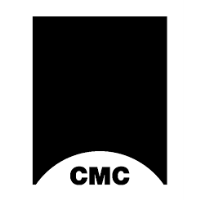Summer digs add to museum fossil collection, one of nation's largest

FOR IMMEDIATE RELEASE: October 14, 2024
MEDIA CONTACT: Cody Hefner (513) 608-5777, chefner@cincymuseum.org
Summer digs add to Cincinnati Museum Center fossil collection, one of nation's largest
Museum and partner Elevation Science Institute recap field season
CINCINNATI – Cincinnati Museum Center’s fossil collection grew after a summer digging through the rock and dirt in Wyoming and Montana. The museum and their partners at Elevation Science Institute collected a variety of dinosaur fossils over a combined nine weeks in the field. The fruits of their labor, transported cross country on flatbed trailers and jeeps, arrived at CMC’s collections facility and to partner organizations for care, preservation and further excavation. The museum will be showcasing some of the work in livestreams for National Fossil Day October 16 and during regular museum hours in their public-facing Paleo Lab.
FIELD WORK VIDEO
A team of 20 CMC staff and volunteers spent three weeks at four sites in Wyoming over the summer while the museum’s partner Elevation Science Institute spent six weeks at multiple sites in Montana. CMC is a federal repository for the material collected from the sites, which are all managed by the Bureau of Land Management, and partners with Elevation Science Institute to expand its active dig capacity. Elevation Science Institute manages a public field school opportunity each summer that averages 30 amateur paleontologists each week working alongside trained professionals.
The process
Teams of paleontologists, fossil hunters and volunteers descended on remote areas out West, exposed to the elements and far from paved roads. Continuing last summer’s work, they removed tarps and dirt and set to work with shovels, pickaxes, tile saws and jack hammers to carefully uncover bones of prehistoric beasts that once ruled the Earth. Heavy hand tools and elbow grease gave way to brushes as rocks, dirt and dust fell away to reveal femurs, skulls and ribs.
With the fossils exposed, but still surrounded by rock, the teams layered the prehistoric bones with toilet paper and tin foil, then created a protective field jacket of burlap and plaster. Digging underneath the fossil, the crew lopped off the rock like the top of a mushroom, carefully flipping it over to cover and plaster the bottom, encasing the fossil and its surrounding rock. The fossil in its field jacket, sometimes weighing hundreds of pounds, was then transported by hand down the hill and loaded onto a trailer along with the summer’s other findings, ready for transport across the Great Plains and the Midwest.
The haul
CMC’s team collected parts of a Hadrosaurus, an herbivore that could grow up to 26 feet long with slightly smaller forelimbs than hindlimbs. Skin remains were part of the Hadrosaurus material collected. The museum team also returned with the frill of a Triceratops or related species and fossilized fish remains, including some bowfin fossils, a primitive fish species that first appeared 250 million years ago but still exists today.
CMC’s partner Elevation Science Institute collected an additional haul of fossils, including a four-foot femur, from a juvenile Diplodocus, a long neck herbivore, an example of which can be seen in CMC’s Dinosaur Hall, as well as a sauropod (long neck dinosaur) skull. Allosaurus fossils and prehistoric crocodilian materials were also excavated by the Elevation Science Institute team over the summer.
All fossil material was delivered to CMC’s collections or to partner institutions for preservation, research or further excavation, including in CMC’s Paleo Lab in itsMuseum of Natural History & Science, where guests can see staff and volunteers actively working to remove fossils from their rock matrix.
The collection
CMC’s vertebrate paleontology collection dates to 1818, when it was established by Cincinnati physician Daniel Drake and the Western Museum Society. Over two centuries, the collection has grown to over 100,000 fossilized bones, teeth, eggs, footprints and even fecal remains of extinct animals. Materials in the collection prominently includes dinosaurs, as well as Pleistocene – Ice Age – material from Big Bone Lick, the birthplace of American vertebrate paleontology. While the majority of the vertebrate paleontology collection is maintained at CMC’s collections facility for preservation and research – both by internal and external researchers – significant materials are on display on the museum floor, including the only fully articulated Torvosaurus in the world, on view in the Dinosaur Hall, and a mastodon and accompanying Ice Age fossils in the Ice Age Gallery.